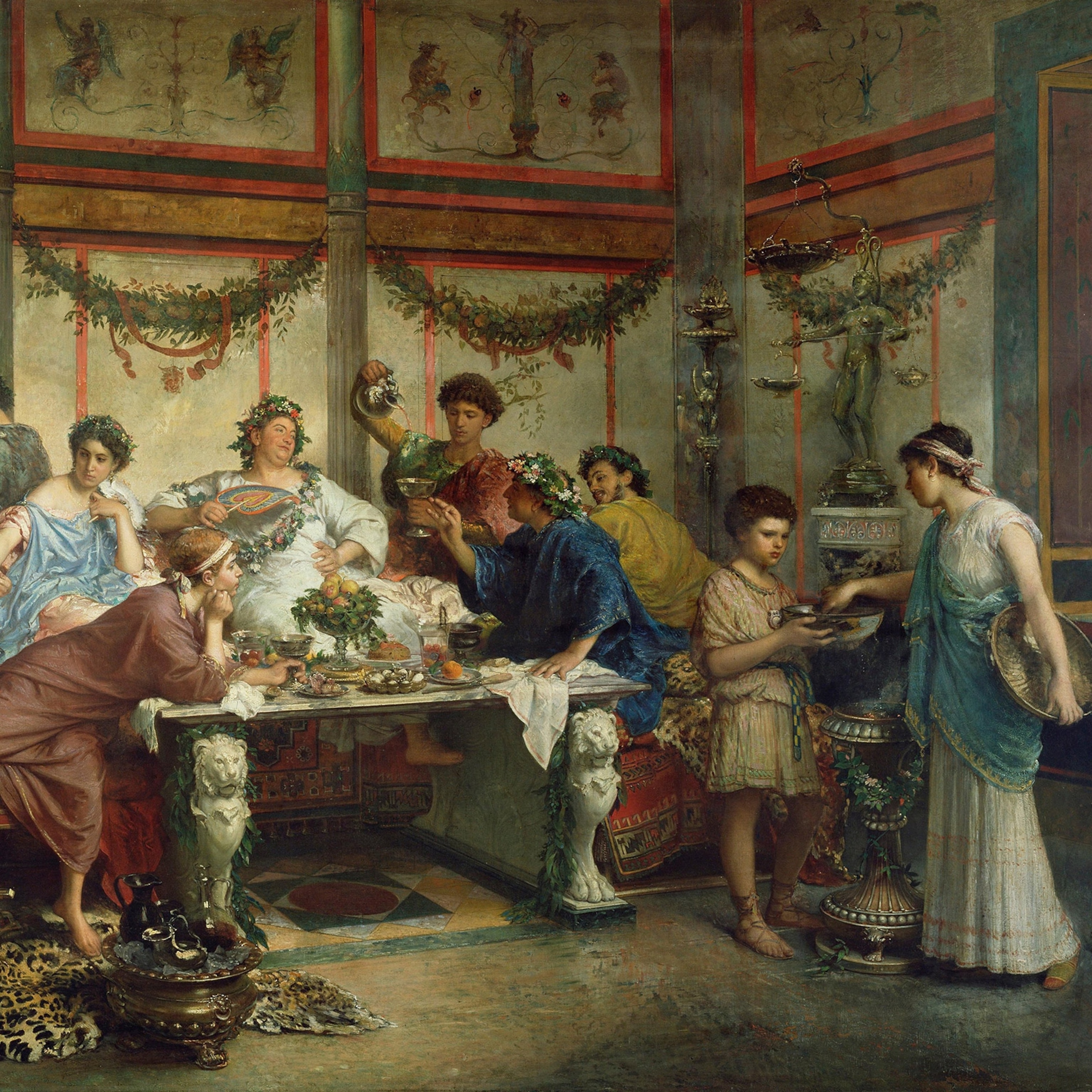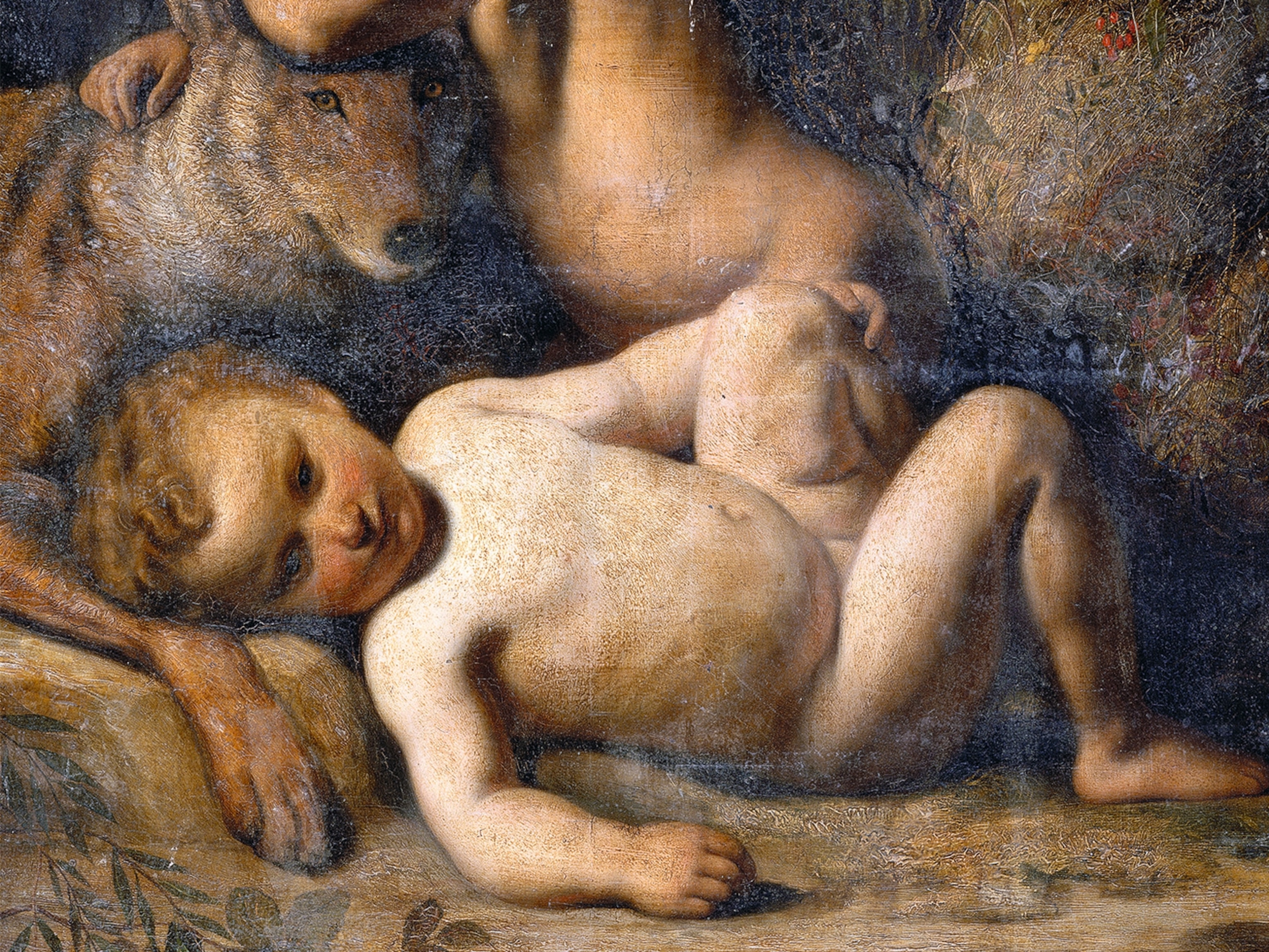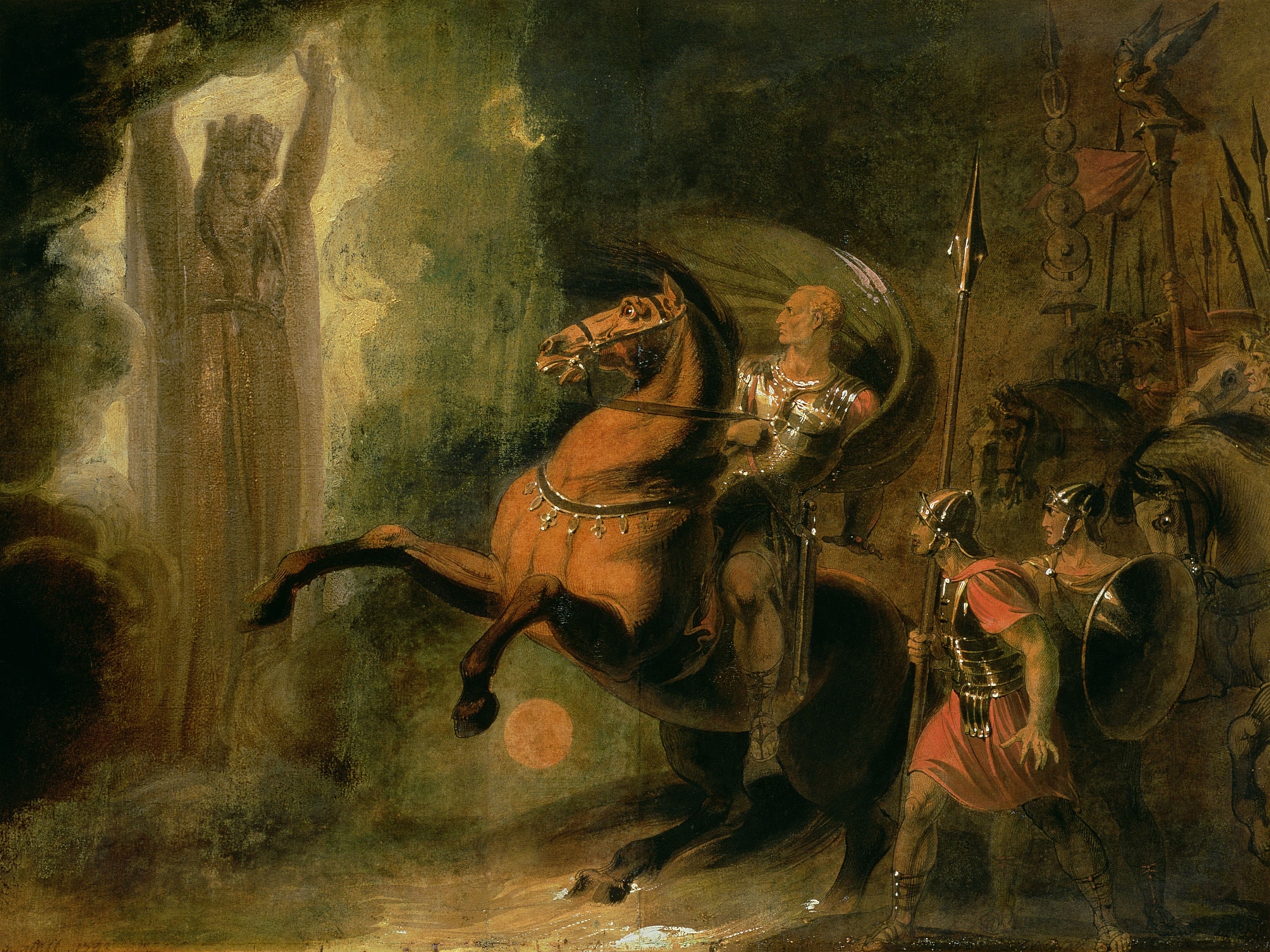
Rome Halts the Huns
For years, the unstoppable Attila sacked city after city until a Germanic-Roman alliance halted the Huns in A.D. 451. The victory underlined a hard truth for the tottering empire: The barbarian threat could only be held at bay with the help of other barbarians.
Everybody may know the name “Attila the Hun,” but nobody knows where he’s buried. Finding him would be quite the prize, since historic accounts of his funeral are impressive: Attila’s body was reportedly entombed in a gold coffin, which was then placed in a silver coffin, which was in turn placed in an outer coffin of iron, a fitting burial for the most feared man of the fifth century.
Much of Attila’s infamy comes from his relentless campaign westward into Europe where he pillaged the riches of the Roman Empire. But he was stopped by a confederation of Roman soldiers and Germanic tribes. Defeating the great Attila might seem to be a sign of Rome’s strength, but many historians believe this moment reveals Rome’s true weakness, brought on by centuries of imperial mismanagement and overextension.
Timeline: Barbarians in Control
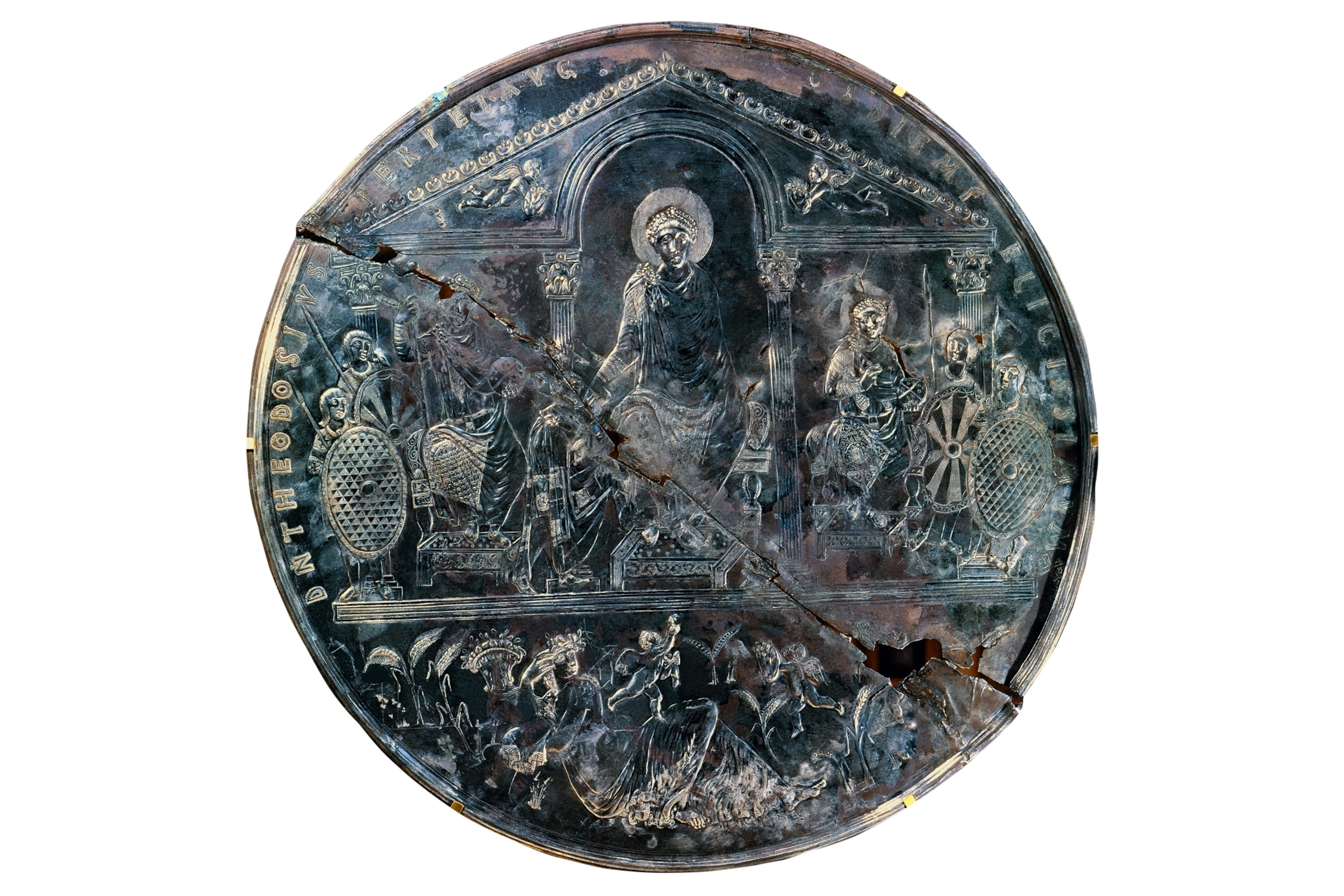
A.D. 395
Emperor Theodosius I dies. The Roman Empire is divided into two parts: the Eastern Empire, governed by his son Arcadius, and the Western Empire, by his son Honorius.
Until 450
Barbarian peoples—Swabians, Vandals, Alans, Visigoths, Franks, and Burgundians—cross the border into the Western Roman Empire to settle. At times they put themselves at the service of Rome.
451
Attila, king of the Huns from 445, invades Gaul. At the head of a Roman-Germanic coalition, Aetius defeats Attila at the Battle of the Catalaunian Plains, after which Attila retreats with his loot.
452
The Huns sack northern Italy but leave the Italian peninsula without attacking Rome itself. The following year, Attila dies. After his death, the Hun Empire quickly disintegrates.
476
Odoacer, a German warrior possibly of Sciri origins, becomes king of Italy, deposing the emperor on September 4. From that day, the Western Roman Empire ceases to exist.
An Empire in Crisis
Relations between the later Roman Empire and the barbarian tribes that massed on its northern border have been commonly portrayed as a straightforward, mutual hostility. In reality, the complex relationship between Rome and its neighbors grew more interconnected through the third and fourth centuries A.D.
A healthy Roman respect for Germanic tribes dates back at least to the time of Julius Caesar, who admired the rugged courage of his opponents in Gaul. Border skirmishes continued throughout the early empire, but the barbarian threat started to erode imperial authority itself during a series of disastrous reigns in the third century. During this time, severe economic crises weakened central Roman rule. Strapped for cash, successive emperors debased the currency to gain short-term financial relief, but instead sparked hyper inflation that disrupted trade and caused more economic turmoil.

Capitalizing on the chaos, Goths and other Germanic tribes began attacking Roman borders. To help repel these attacks, Rome began forming complex alliances and counter-alliances with the barbarians. More and more, the empire relied on German mercenaries to serve in its army. These men often found themselves defending the frontier against their own people.
Although order was restored by the accession of Diocletian in 284, the empire never recovered its former economic strength. The relationships formed with Rome’s northern neighbors lingered. Following the death of Theodosius I in 395, the entire Roman world split in half: the Western Roman Empire—centering on the new imperial capitals of Milan and Ravenna—and the Eastern Roman Empire ruled from Constantinople.

The Huns Are Coming

Complex power struggles ensued between the Eastern and Western Empires, which were both facing external military threats. In the 370s, reports from the imperial border at the Danube River told of a terrifying new enemy: the Huns, who had arrived so swiftly it seemed they came out of nowhere. This fierce nomadic people swept in from the east and conquered their way to the Goth territories that lay north of the Danube.
In the face of this threat, the Goths pressured the Eastern Roman emperor, Valens, to allow them to cross over the river border and resettle on Roman lands. Distracted by an attack from the Persians, Valens rashly agreed—but instead of inviting in a new population of biddable subjects, who would pay taxes and help defend the border, Valens had created an enemy within: In 378, the Goths revolted, defeating and killing him at the Battle of Adrianople.
Attempts to turn them into loyal defenders of the frontier largely failed, culminating in the Goth invasion of Italy and the sack of Rome in 410. As Gothic hordes looted the capital that year, the Huns were settling down on the grasslands of their new home in modern-day Hungary. Among them was a young boy—a member of the ruling family—named Attila.

Giant Steppes
Historians believe that the Huns are related to the Xiongnu, a tribe who lived on the steppes of eastern Asia near modern-day Mongolia. In the early fourth century, they began moving westward across the steppe into Europe until the Roman border stopped their advance.
One of the earliest descriptions of them comes from the Roman historian Ammianus Marcellinus, who played up some of their more uncivilized traits. He described a people who warmed up meat by heating it between their thighs and wore crude clothes made of “skins of field-mice sewn together.” Other Roman sources emphasized their formidable military skills as mounted archers.
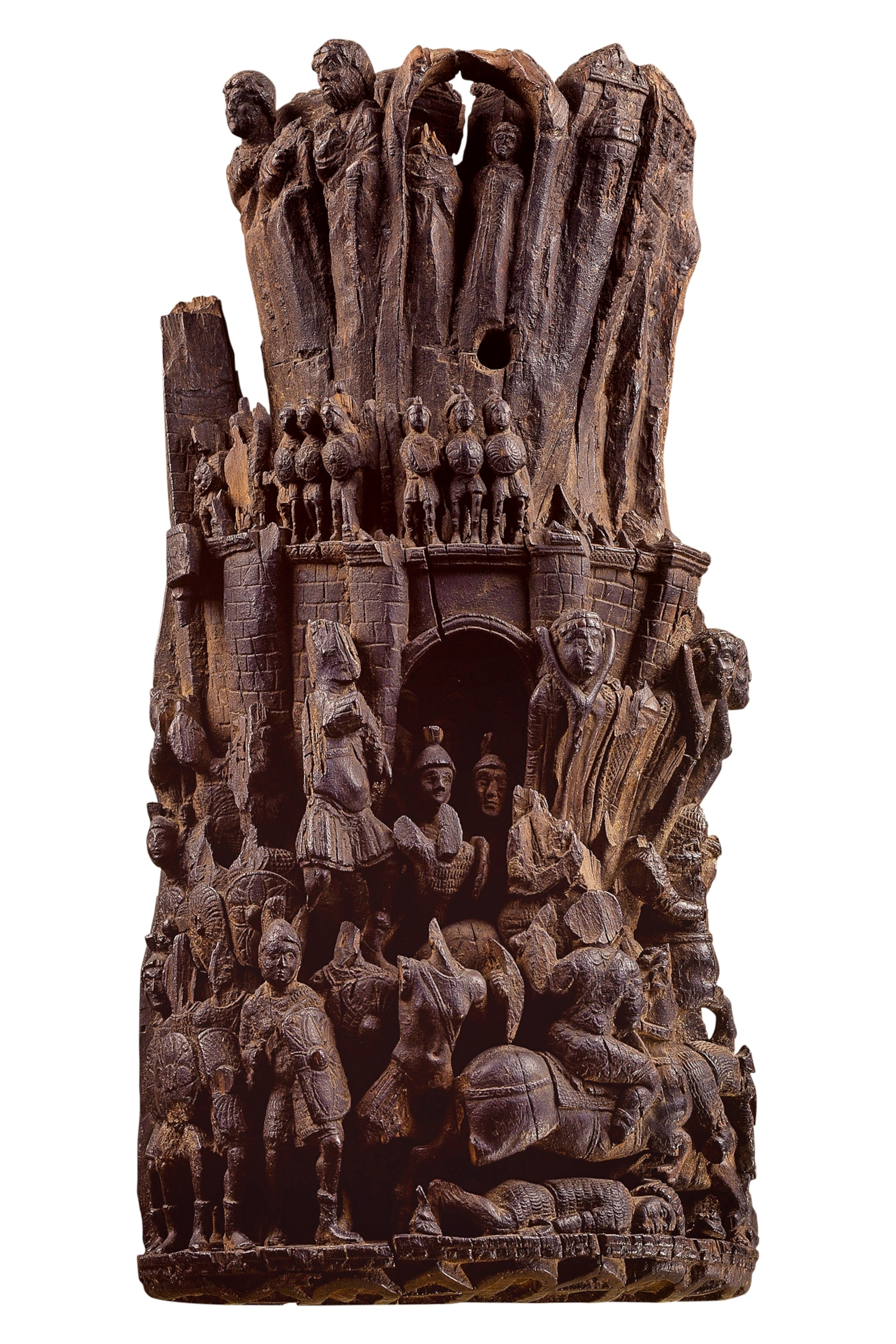
In 445, having inherited lands that stretched from modern-day Germany to the Black Sea in the east, Attila began his rule by murdering his brother Bleda to take sole leadership of the Huns. The early years of his reign were marked by a campaign of terror against the Eastern Roman Empire, alternating outrageous demands for vast amounts of tribute with devastating incursions into imperial lands, penetrating deep into Greece in 447. Having wrung important concessions from Constantinople, Attila then turned his attention to the Western Empire, and especially Gaul.
If the Hun king were looking for an excuse to invade the Western Empire, he got one in the form of Honoria, the strong-willed sister of the Western Roman Emperor Valentinian III. Exiled to Constantinople by her brother, Honoria tried to escape by letting it be known to Attila that he could marry her. Although the emperor foiled her plan, Attila artfully considered Honoria his wife and demanded half of the Western Empire as her dowry. Valentinian’s flat refusal was reason enough for Attila to launch his invasion of Gaul. Eventually, he hoped, the chaos he would unleash there would force Valentinian to pay him to leave.
Attila saw Gaul as an easy target. The local population was composed of Visigoths and other tribes who had settled there, a complex mix that he assumed would thwart Rome’s attempts to mount an effective defense. During the spring of 451, Attila put his plan into action and began sacking the cities of northern Gaul one after another. His expectation of a weak opposition, however, had not taken into account the skillful diplomacy of the Roman general Flavius Aetius, who was able to draw all the diverse peoples of Gaul—Visigoths, Franks, Burgundians, and Alans—into a strong coalition to face down the Hun threat.
General Confusion
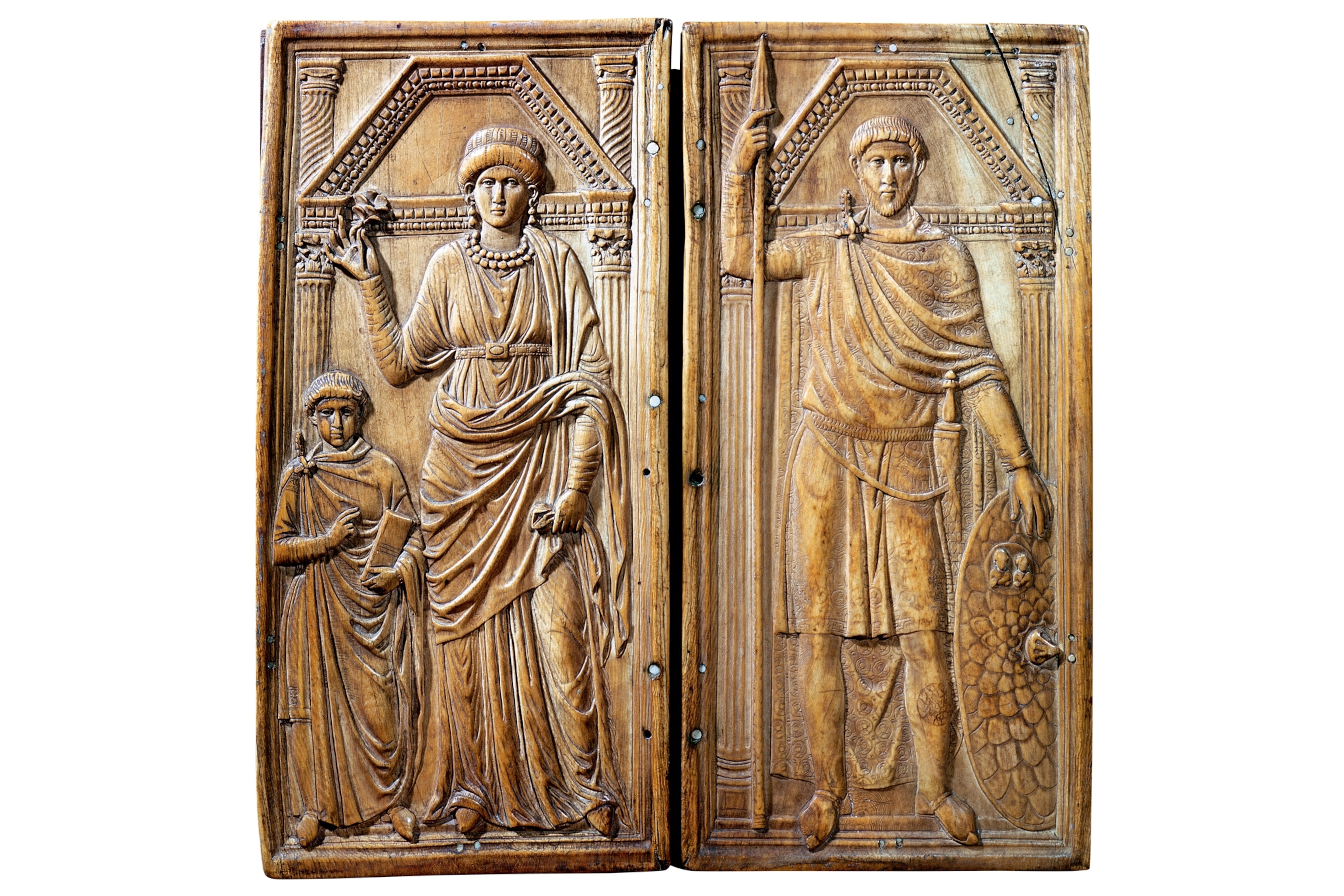
The soldier on the right of this marble diptych from the treasury of Monza Cathedral in northern Italy is traditionally believed to be Stilicho, a general of Vandal origin in the service of Valentinian III’s predecessor, Honorius. Some historians, however, suggest it is, in fact, Flavius Aetius, the heroic general of the Catalaunian Plains. The figures on the panel on the left represent the man’s wife and son. If the general depicted here really is Aetius, then the busts depicted on the medal of the shield would be the Emperor Valentinian himself—who later kills Aetius with his own hands—and the emperor’s mother, Galla Placidia.
A brilliant soldier and statesman, Aetius effectively directed Emperor Valentinian’s reign after becoming supreme commander of the Western Roman Empire in 432. Aetius had spent time as a hostage of the Huns, which gave him an insider’s knowledge of their culture. His experience in captivity had led him to establish valuable personal relationships with key Hun leaders. Aetius’s own rise to power was due to his shrewd employment of Hun mercenaries in the service of the empire. With their help, he had launched a series of military campaigns aimed at keeping the majority of barbarians settled in Gaul under control. Despite the abilities of its military leader, nothing better illustrates how much power the Western Roman Empire had lost than the need to cobble together such an alliance at all.
Estimates suggest that just 50 years before, the number of Roman soldiers in Gaul exceeded 50,000, but 50 years of civil skirmishes and neglect had depleted its ranks. By 451 there were probably only a few thousand Roman soldiers left in the province.
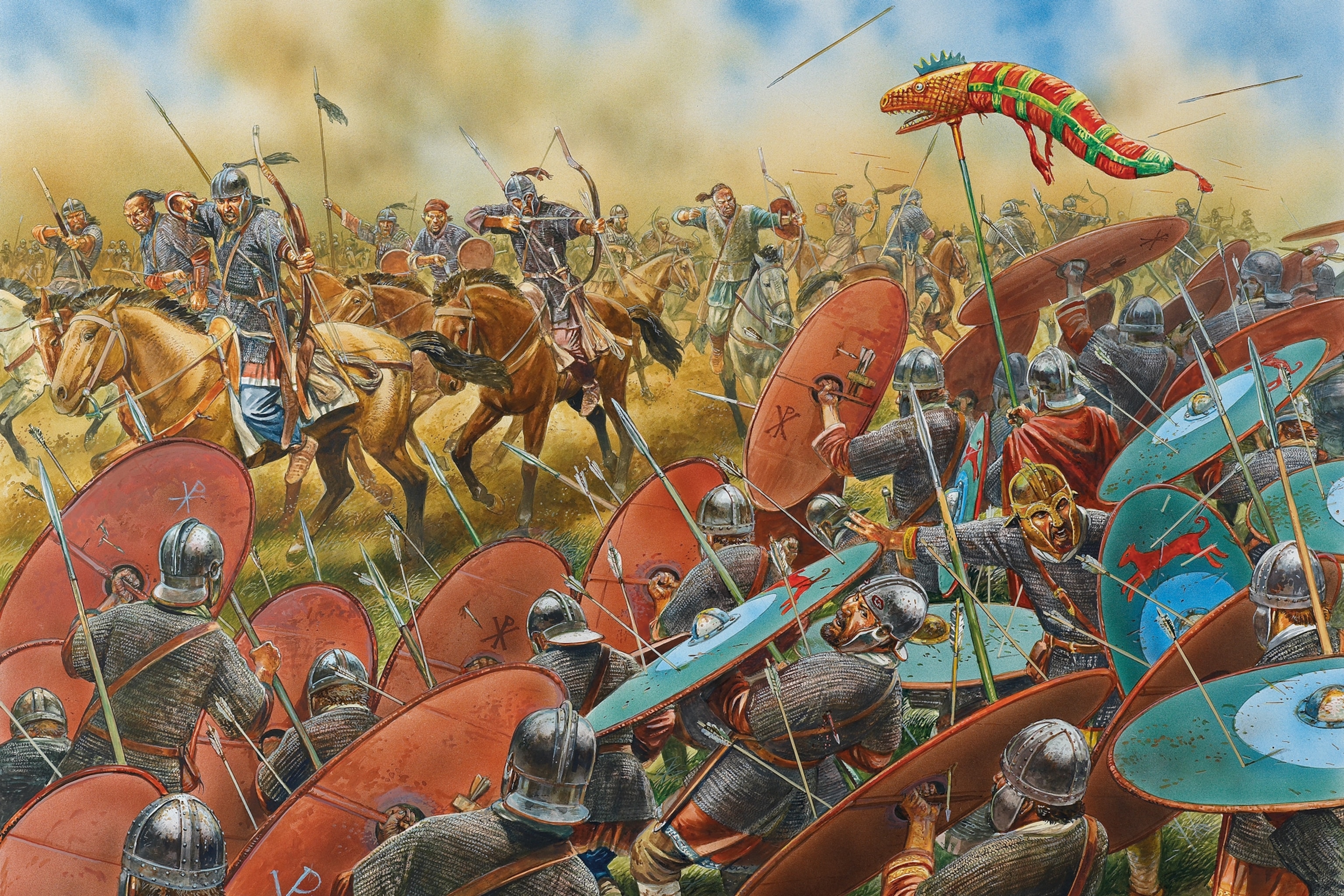
Showdown on the Plains
The Huns wreaked their usual devastation on Gaul, but the solid opposition they met increasingly frustrated Attila’s aim of a “smash and grab” raid on the province. The unexpected appearance of Aetius and his allies obliged Attila to lift his siege of Aurelianum (modern-day Orleans) and withdraw. After a week on the defensive, Attila decided to face down the Roman-led army on the Catalaunian Plains, to the north of the French city today known as Troyes, which he considered a suitable location for deploying his numerous cavalry.
According to the sixth-century historian Jordanes, the fighting began at midday with a clash between pro-Roman Visigoths and Huns. Each side sought to control a section of high ground beside the battlefield. Aetius’s army was probably deployed between this ridge and an area of thick forest, and these natural obstacles would have impeded the Huns from using one of the strategies favored by the nomadic peoples: overwhelming their opponents along their flanks using a cavalry attack.
Now Attila was forced to launch a full frontal assault. On his orders, the Hun cavalry clashed with the pro-Roman Alans in the center of the battlefield. The Visigoths counterattacked, beat back the Huns, and forced Attila to withdraw.
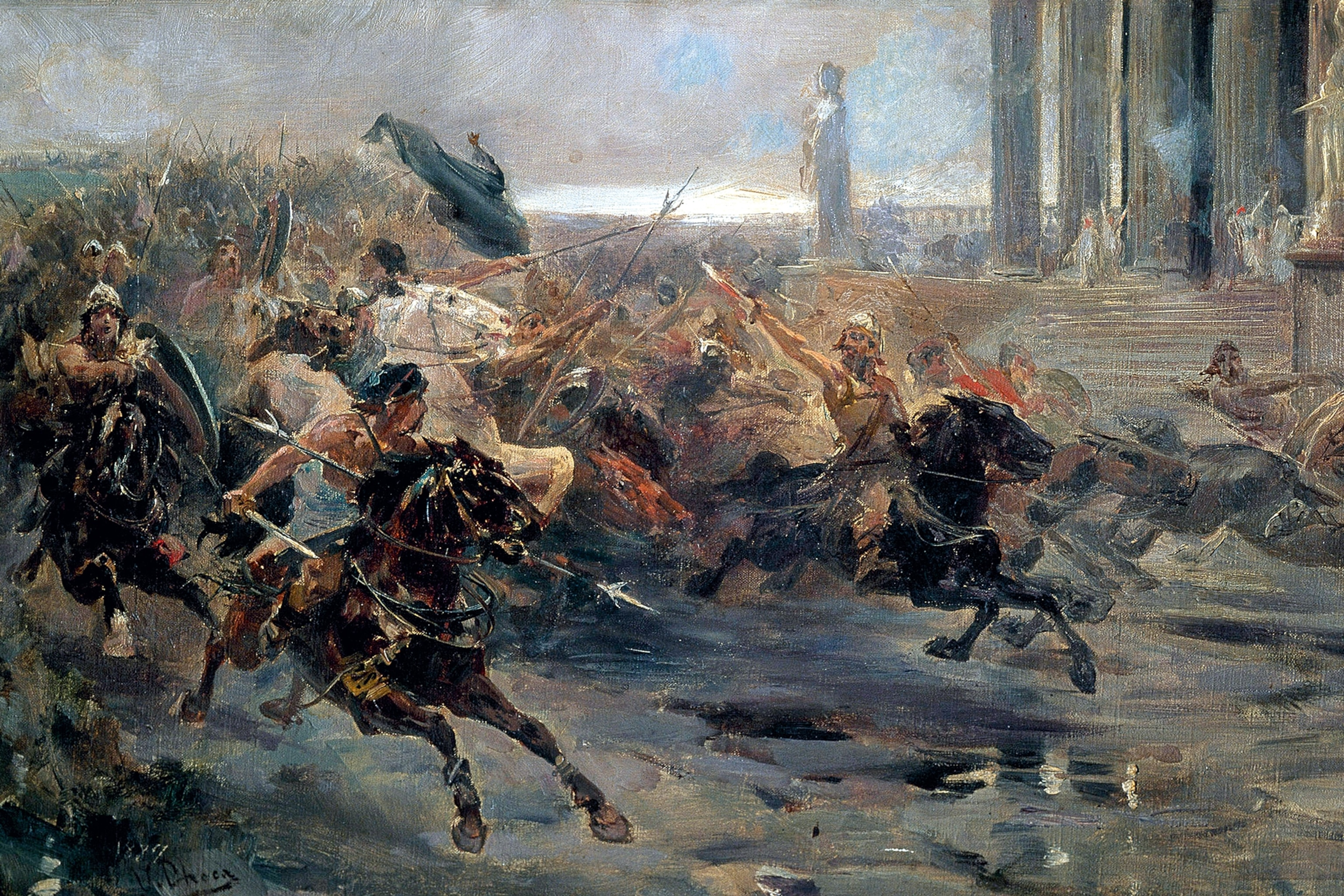
Winners and Losers
Despite taking away with him the considerable plunder he had accumulated in the course of the campaign, it was Attila’s only major battleground defeat. A year later, he invaded northern Italy, sacking the cities of Milan and Aquileia, but was talked out of launching an attack on Rome after some hasty diplomacy by Pope Leo I.
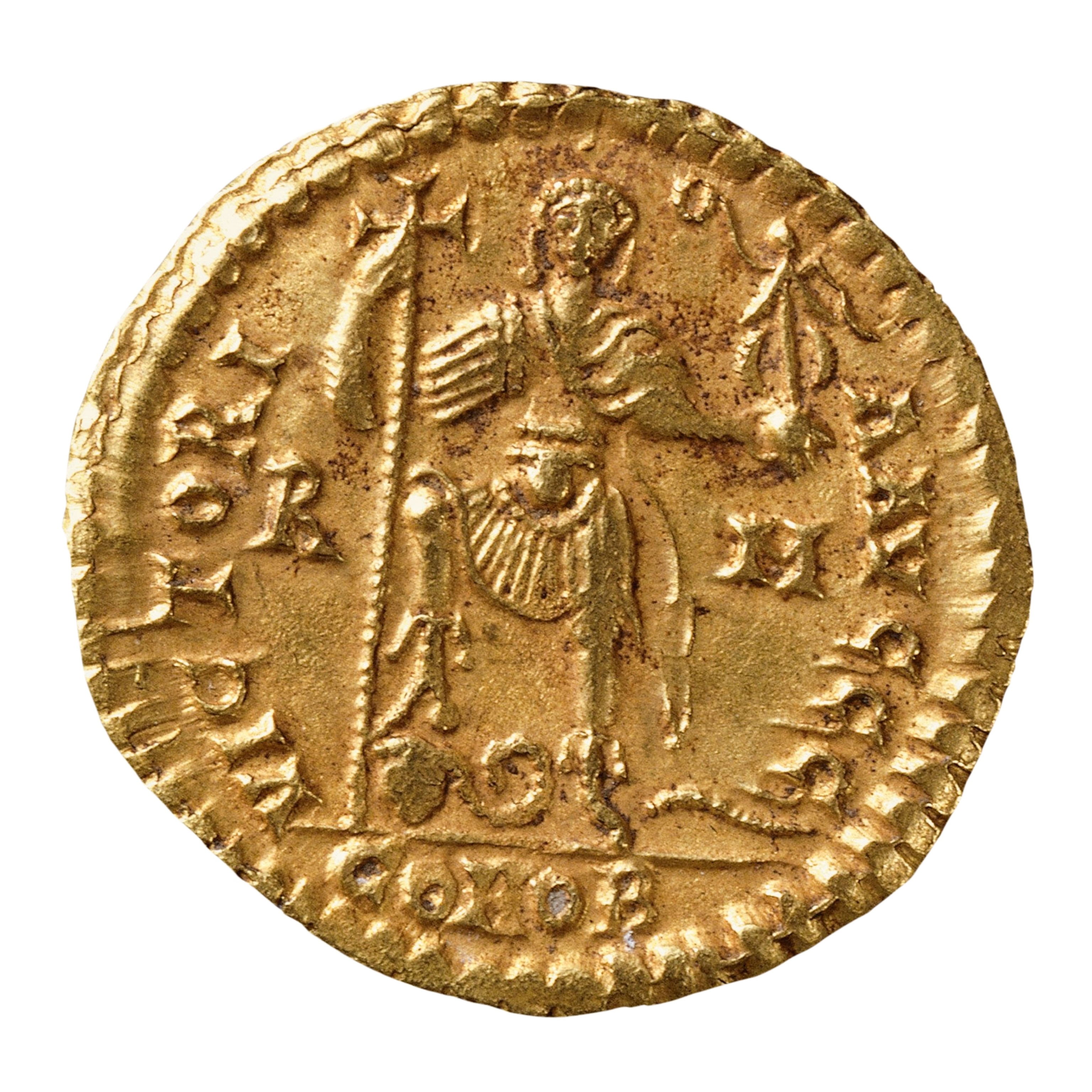
In 453, the fearsome Hun leader died, somewhat anticlimactically, of a brain hemorrhage on his wedding night, and was buried—if the story is to be believed—in his elaborate triple coffin. It is said that, in a posthumous act of cruelty, the slaves who dug his grave were executed.
Deprived of his ruthless, magnetic leadership, his heirs were unable to keep his empire together. The Hun terror dissipated as quickly as it had arrived. Historians have debated its legacy ever since, questioning the extent to which the century of Hun mayhem was instrumental in Rome’s eventual collapse.
Many modern historians consider Attila as a colorful detail in a general picture of administrative chaos, in which Roman rule was threatened more by its own follies than any outside enemy. Years of infighting and poor governance had left the imperial army under-resourced. The fate of the hero of Gaul, the shrewd General Aetius, exemplifies such folly—in 454 he was murdered by his master, Valentinian III, in a fit of rage.
Following Valentinian’s reign, a series of short-lived, obscure emperors struggled to prevent their venerable state, inherited from Augustus, from imploding. In 476, the last of these abdicated to a Germanic mercenary, Odoacer, and the Western Roman Empire was no more.
From Pillar to Post-Imperial
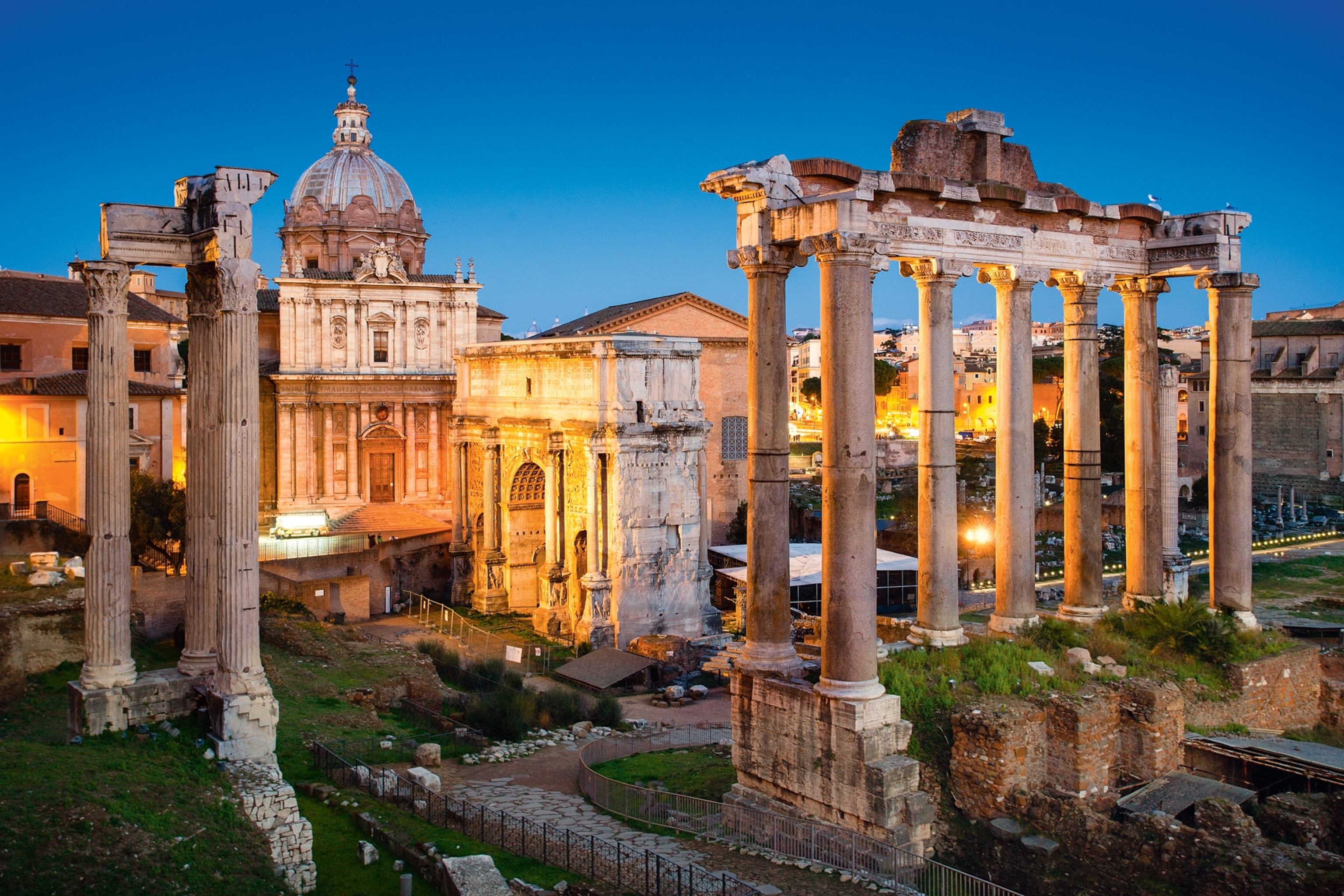
During Attila’s boyhood, when Rome was sacked by the Goths in A.D. 410, the official imperial capital was already slipping into irrelevance. A few years before, in 395, the splitting of the Roman Empire into western and eastern halves meant that much of Rome’s power had already shifted north to Milan and Ravenna, leaving the Senate—an institution that traced its history to the eighth century B.C.—as little more than a city council. By the time Odoacer proclaimed himself the first barbarian king of Italy in 476, the city’s crumbling monuments were a stark reminder of a vanished age. Regional control was now in the hands of Constantinople, to whom Odoacer himself pledged allegiance. For centuries to come, Rome would be fought over by Europe’s contending powers. Its former position as capital of the civilized world evolved into the symbolic Eternal City, the uncontested center of the western church until the Reformation.

